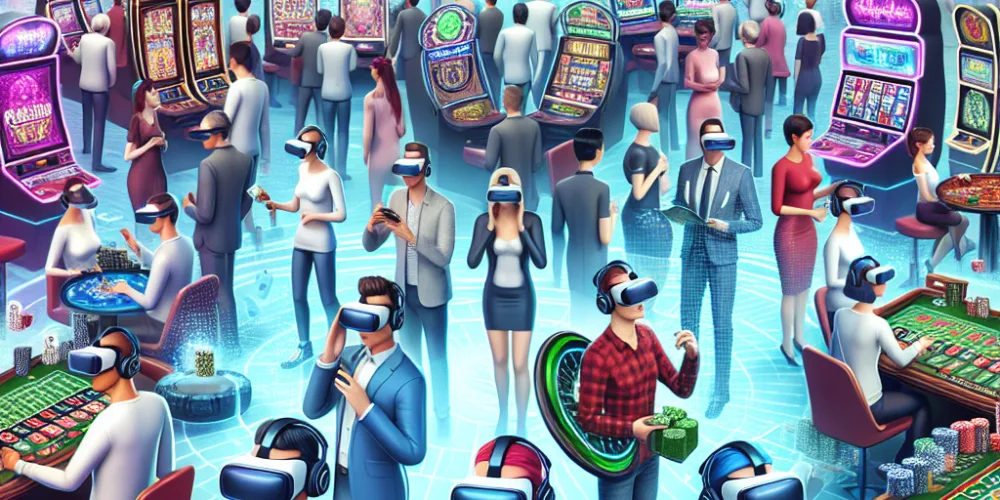In the digital age, the lines between physical and virtual experiences continue to blur, particularly in the gaming industry. One of the most striking developments in recent years is the emergence of virtual reality (VR) casinos, a concept that once seemed like a futuristic fantasy. This evolution is not just reshaping how players engage with casino games but also transforming the very essence of gambling entertainment.
Virtual Reality technology has been around for several decades, but it only started to become mainstream with the advent of affordable VR headsets like Oculus Rift, HTC Vive, and PlayStation VR. These devices are providing gamers and non-gamers alike with immersive experiences that were previously the domain of science fiction. Today, VR casinos are leveraging this technology to offer a simulated gaming environment that replicates the thrill of being in a physical casino.
The immersive quality of VR is its biggest selling point. Players can enter a full-scale casino replica, walk around, choose their games, interact with other players, and sit at a gaming table. This level of interaction and immersion is something traditional online casinos cannot match. With VR, users can watch other players’ moves, see their tells, and feel as though they are truly sitting at a blackjack table or standing in front of a slot machine.
Games available in VR casinos are similar to those in any land-based or online casino, including slots, poker, roulette, and blackjack. However, the VR element adds a depth of realism and engagement. For instance, when playing VR poker, you can physically handle your chips and cards, look around the table, and study the facial expressions and gestures of your opponents. This not only enhances the enjoyment of the game but also injects a level of strategy that mimics real-life poker playing.
Beyond the games themselves, VR casinos are also beginning to incorporate other real-world casino features such as VIP rooms, live events, and interaction with guest hosts. Some platforms are exploring ways to integrate concert experiences or virtual meetings with celebrities. This could not only draw more users but also open up new revenue streams for developers.
However, the proliferation of VR casinos also raises several concerns. One of the primary issues is the potential for increased gambling addiction. The immersive nature of VR can make it harder for individuals to set limits and recognize when to stop playing. Furthermore, there are questions about regulation and the prevention of underage gambling, as current checks may not be as effective in a virtual environment.
Despite these challenges, the VR casino market is poised for growth. According to a report by Grand View Research, the global virtual reality in gaming market size was valued at $11.56 billion in 2019 and is expected to grow at a compound annual growth rate (CAGR) of 30.2% from 2020 to 2027. As technology advances and becomes more accessible, the number and quality of VR casino offerings are expected to increase, providing a significant edge over more traditional forms of gaming.
Industry experts suggest that the key to successful implementation of VR casinos lies in responsible gaming practices. This includes the use of technology that can help monitor and control gambling behavior. Additionally, clear and transparent regulations need to be established to manage the unique aspects of a virtual gambling environment.
In conclusion, VR casinos represent a significant forward leap in the casino industry, offering an engaging and immersive way to play that goes beyond sitting at a computer or mobile device. As the technology continues to evolve and address its challenges, it has the potential to completely transform the gambling landscape. For enthusiasts and casual players alike, the future of gambling beckons with the promise of an experience that is as thrilling as it is novel.

Karine Gomez is an enthusiastic writer and avid gamer with a particular love for PlayStation and casino gaming. Her deep knowledge of gaming trends and casino dynamics makes her articles both informative and engaging. Karine’s passion for PlayStation games and her firsthand experience with casino play shine through in her writing, offering readers authentic insights and valuable tips.

